This bold Caribbean stew is rich with tradition and deep flavor, made with slow-braised meat, warm spices, fiery chili, and cassareep. It’s especially popular during the holidays, but it’s so good, you’ll want it all year long.
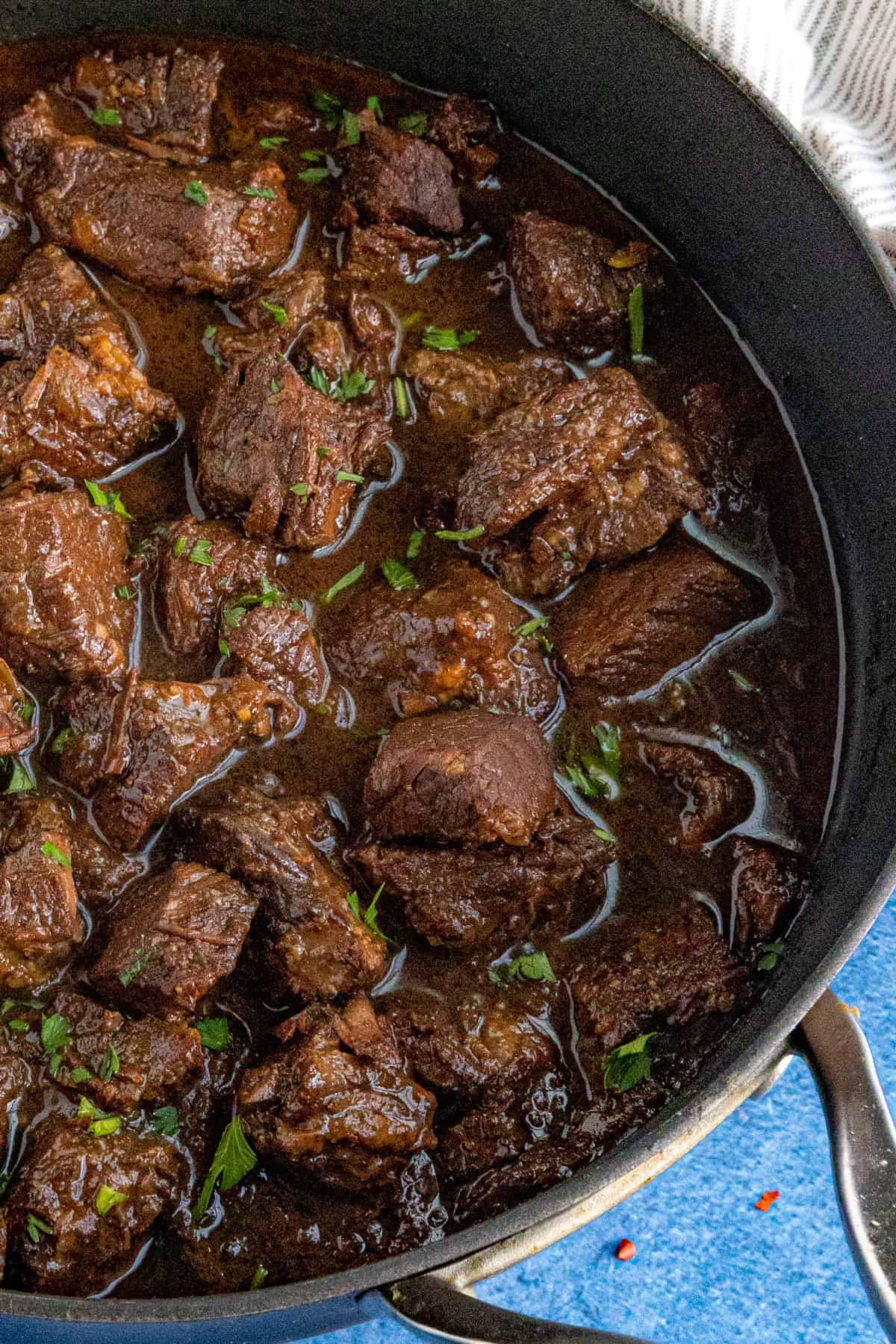
We're making Guyanese Pepperpot in the Chili Pepper Madness kitchen, my friends, and this is a recipe you absolutely need in your collection.
What is Pepperpot?
Pepperpot is the national dish of Guyana - a rich, hearty stew that is deeply rooted in Guyanese cuisine. It is known for its bold flavors, tender slow-cooked meats, and signature dark, slightly bitter sauce made with cassareep, a bitter, syrupy extract of cassava root.
It is traditionally served during Christmas and special occasions, often made in large batches and enjoyed over several days, as the flavors deepen and improve over time.
The flavor of pepperpot is uniquely sweet, spicy, and savory, with warming spices like cinnamon, cloves, and allspice, fiery chili peppers such as wiri wiri or Scotch bonnets, and that unmistakable depth from cassareep.
Let's talk about how to make pepperpot, shall we?
Why You Need This Recipe
- Bold, Addictive Flavor. The recipe offers tender, slow-braised meat in a rich, spiced sauce with deep Caribbean roots you're bound to love.
- Fiery Chili Heat! It's made with piquant Scotch bonnet or traditional wiri wiri peppers for that perfect spicy kick we all crave.
- Awesome Leftovers. These flavors get even better the next day, making it a must-cook for spicy food lovers. So good!
Pepperpot Ingredients
The full ingredients list with measurements and cooking instructions is listed in the printable recipe card at the bottom of the post.
- Meat. Beef chuck, oxtail, or brisket for rich, tender results, plus optional pork shoulder for extra flavor.
- Aromatics. Onion, garlic, and fresh thyme to build a savory, flavorful base.
- Warm Spices. Ground cinnamon, cloves, allspice, black pepper, and brown sugar for deep, balanced flavor. Plus salt to bring it all together.
- Cassareep. Cassareep, a bitter syrup made from cassava root, is the essential ingredient that gives pepperpot its signature dark color and bold, slightly sweet taste.
- Vinegar. A touch of tanginess to brighten the stew.
- Chilies. Scotch bonnet or wiri wiri peppers for traditional Caribbean heat.
- Liquid. Water or beef broth to gently braise the meat until fall-apart tender.
How to Make Pepperpot - the Recipe Method
Brown the Meat. Season with salt and pepper, sear in oil until browned, then set aside and cook the onion and garlic in the same pot until softened.
Toast the Spices. Stir in thyme, cinnamon, cloves, allspice, black pepper, and brown sugar. Cook 1 minute.
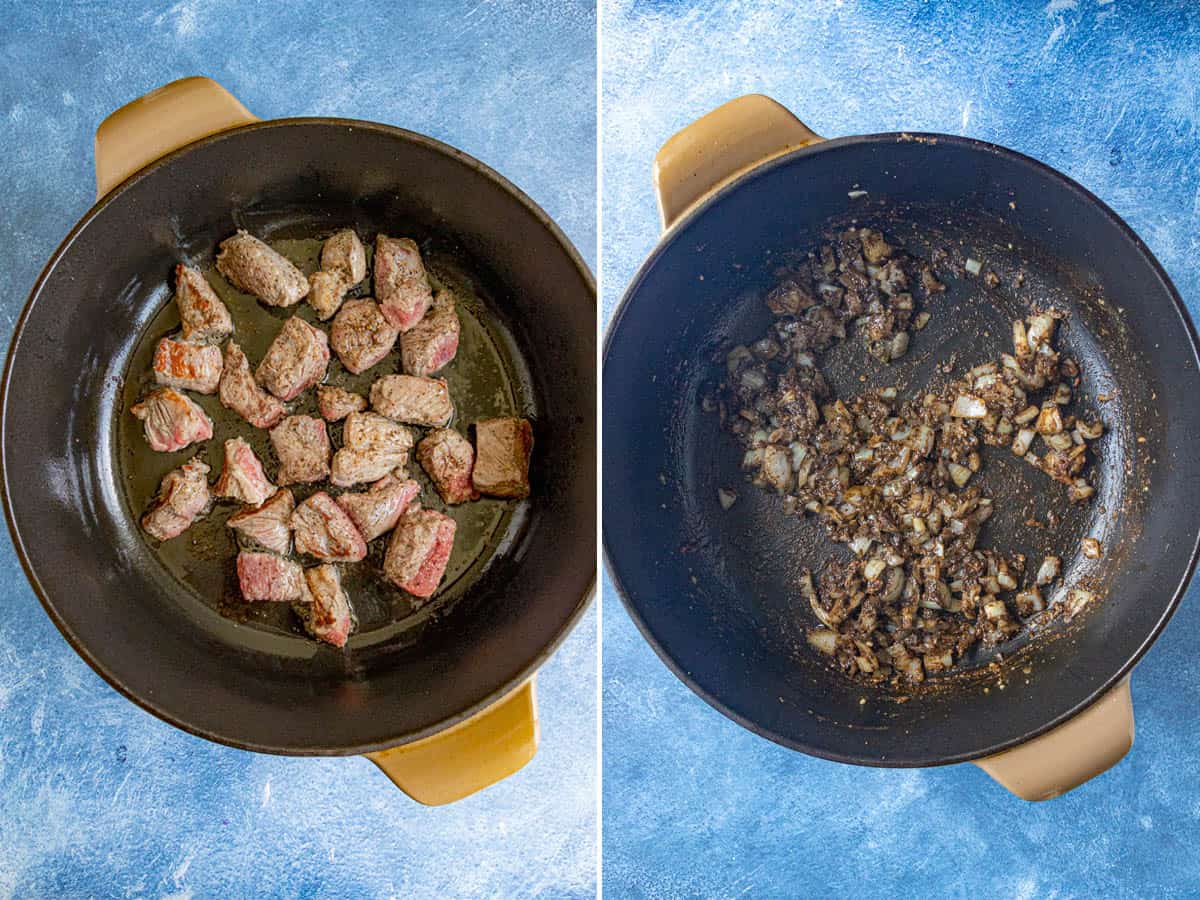
Add the Liquids. Return meat to the pot, add cassareep, vinegar, and enough water or broth to just cover.
Add the Chilies. Nestle whole Scotch bonnet or wiri wiri peppers into the pot.
Simmer Low & Slow. Bring to a boil, reduce heat, cover, and simmer 2.5 to 3 hours until meat is tender.
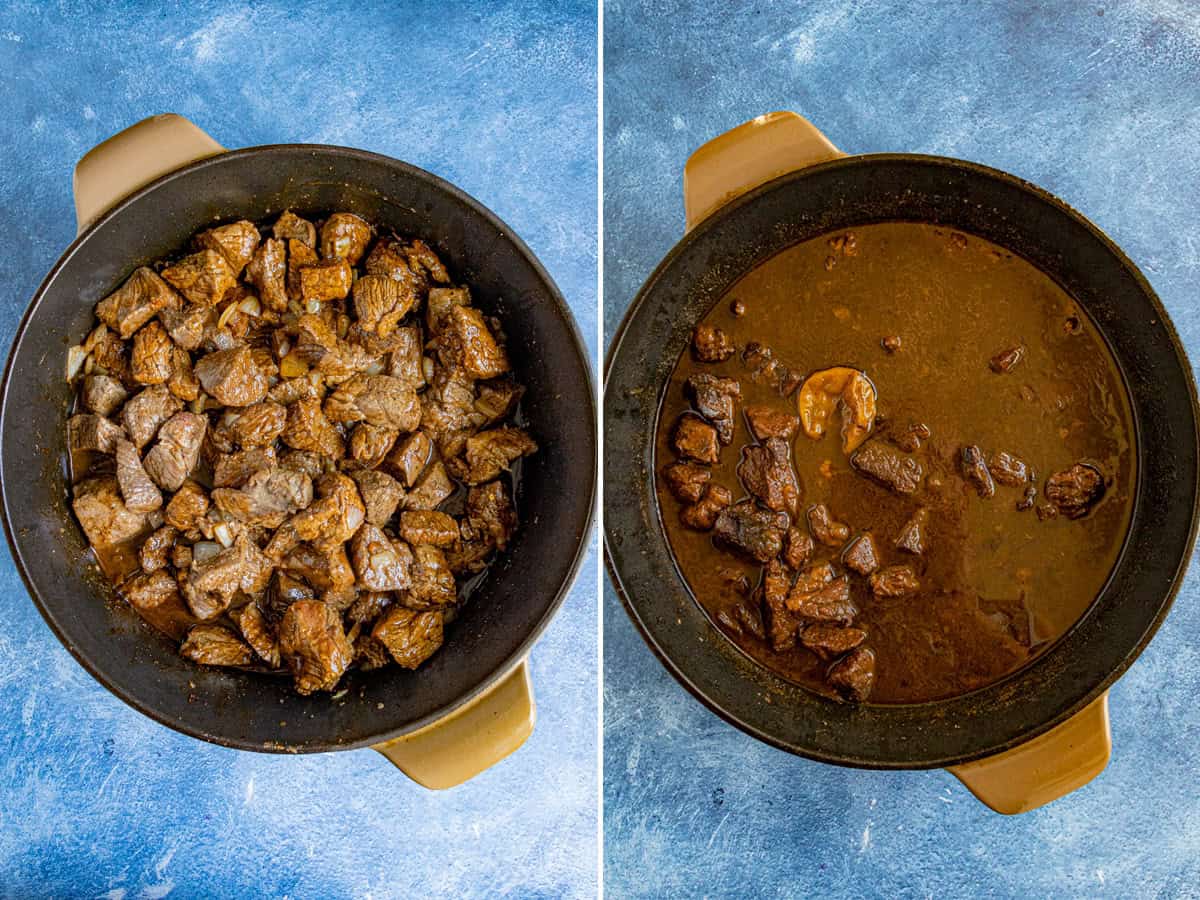
Finish & Serve. Remove or mash chilies for more heat, adjust seasoning, and serve hot with dense bread or cassava.
Boom! Done! Your pepperpot is ready to serve. Easy enough to make, isn't it? I hope you love it!
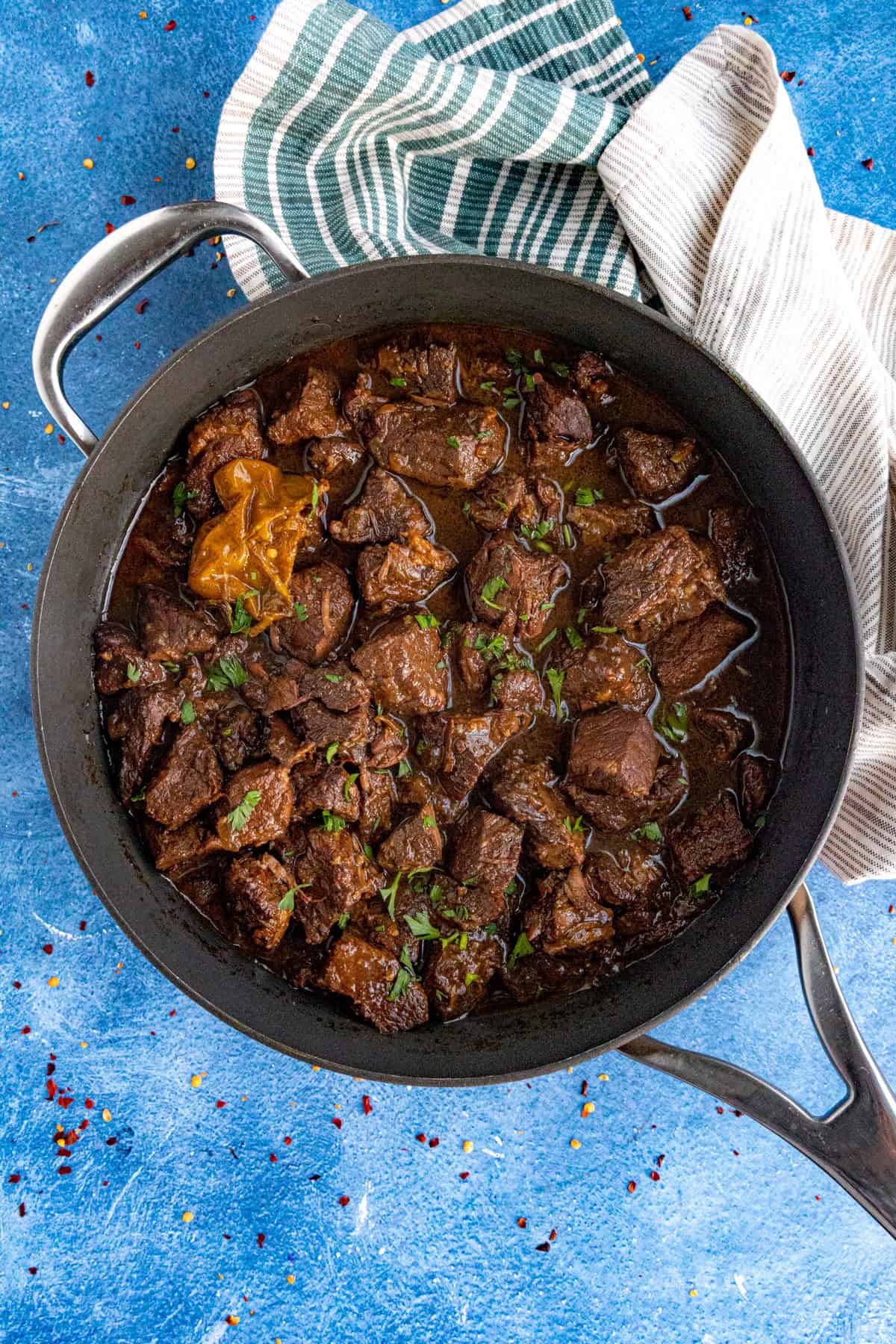
Mike's Recipe Tips & Notes
- Cassareep is non-negotiable for authentic flavor. Look for it in Caribbean markets or online.
- Chili peppers & heat factor. One whole Scotch bonnet (or habanero as a sub) gives heat without too much fire. Use 2 or more of them for more dramatic heat. Mash it at the end for extra kick. Wiri wiri peppers are small, round, and fiery, a classic choice for Guyanese pepperpot. Scotch bonnets are a common substitute that offer a similar fruity heat.
- Let it rest overnight. It’s even better the next day.
- Try with other meats. The recipe works with goat, lamb, or wild game for even bolder versions.
Serving Pepperpot
Pepperpot is traditionally served hot with dense, crusty bread, perfect for soaking up the rich, flavorful sauce.
In Guyana, it’s common to enjoy it with homemade plait bread or cassava bread. You can also serve it with steamed rice, boiled cassava, or plantains for a hearty, satisfying meal.
Try it with Jamaican Rice and Peas or Callaloo.
Storage
Refrigerator. Let the pepperpot cool, then transfer to airtight containers. Store in the refrigerator for up to 5-7 days. The flavors will continue to develop.
Freezing. Pepperpot freezes well. Store in freezer-safe containers for up to 3 months. Thaw in the fridge overnight before reheating.
Reheating. Reheat gently in a pot on the stove over low heat until warmed through, stirring occasionally. You can also reheat individual portions in the microwave. Add a splash of broth or water to loosen it up.
That's it, my friends. I hope you enjoy this pepperpot recipe. Let me know if you make it. I'd love to hear how it turned out for you. Please share!
Try Some of My Other Popular Recipes
- Mofongo Recipe - made with fried green plantains mashed with bacon or chicharrones, a nice side for pepperpot!
- Arroz con Gandules (Puerto Rican Rice with Pigeon Peas) - another great side dish pairing!
- See all of my Spicy Caribbean Recipes
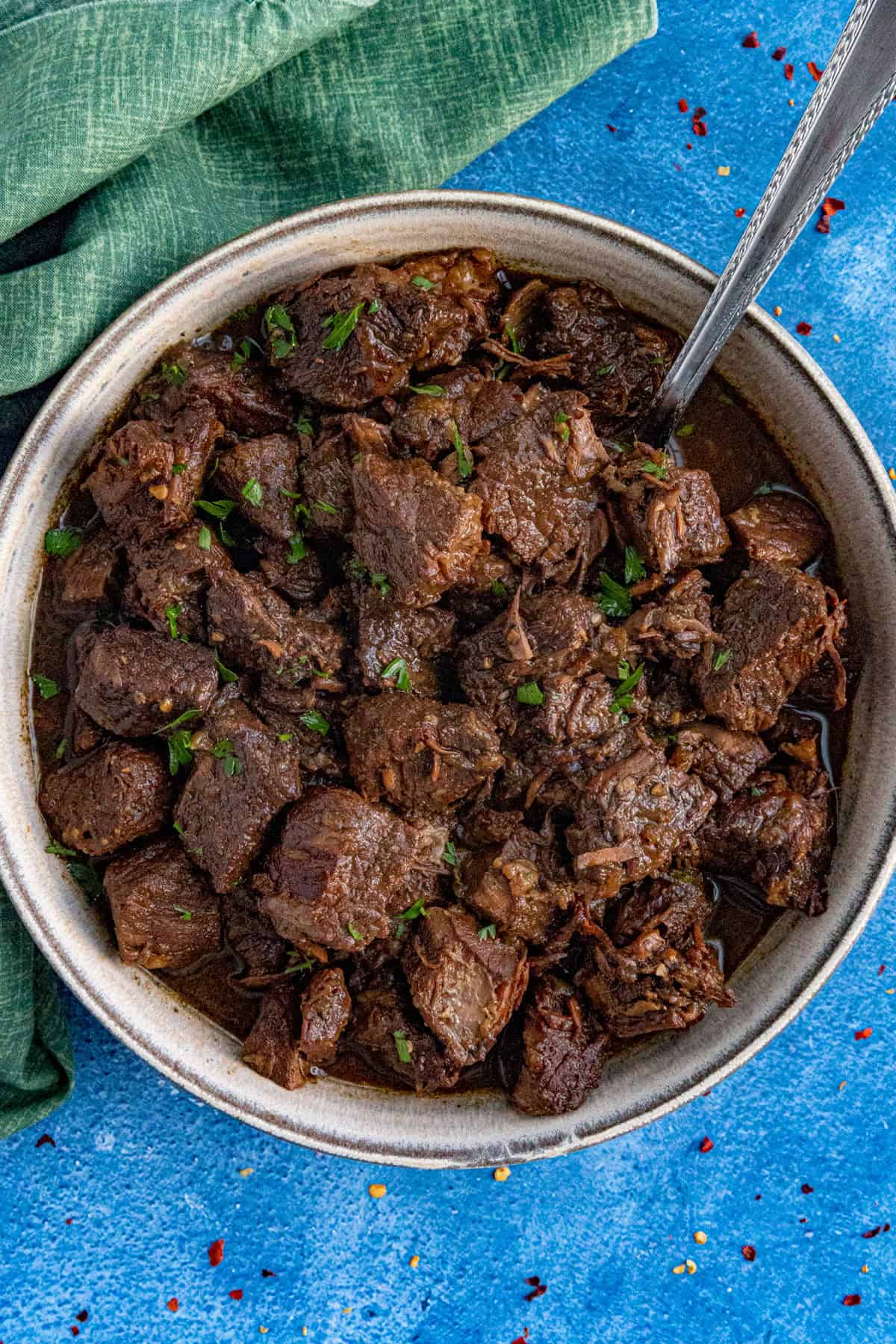
Got any questions? Ask away! I’m happy to help. If you enjoy this recipe, I hope you’ll leave a comment with some STARS. Also, please share it on social media. Don’t forget to tag us at #ChiliPepperMadness. I’ll be sure to share! Thanks! — Mike H.
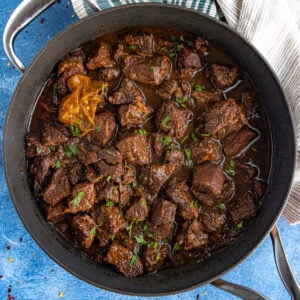
Guyanese Pepperpot Recipe (Rich & Spicy Caribbean Stew)
Ingredients
- 1 tbsp vegetable oil
- 2 pounds beef chuck oxtail, or brisket cut into chunks
- 1 pound pork shoulder optional, or use more beef
- 1 large onion chopped
- 5 cloves garlic minced
- 1/4 cup fresh thyme leaves or 2 teaspoons dried thyme
- 1 tablespoon ground cinnamon
- 1/2 teaspoon whole cloves or 1/4 teaspoon ground cloves
- 1 teaspoon ground allspice
- 2 teaspoon freshly cracked black pepper
- 2 tablespoons brown sugar
- 1/2 cup cassareep essential - see notes
- 1 tablespoon vinegar white or apple cider
- 1-2 whole Scotch bonnet peppers (or wiri wiri peppers, which are traditional in Guyana) pierced once with a knife (optional but traditional)
- Salt and pepper to taste
- Water or beef broth (use broth for deeper flavor) enough to just barely cover the meat, typically 2-3 cups depending on pot size.
Instructions
- Heat the oil in a large Dutch oven or heavy pot over medium-high heat. Season the meat with salt, then brown in batches on all sides, 3-4 minutes per side. Remove and set aside.
- Reduce heat to medium and add onion. Cook 3-4 minutes.
- Add garlic and cook for 1 minute until softened and fragrant.
- Stir in thyme, cinnamon, cloves, allspice, black pepper, and brown sugar. Let them bloom in the heat, stirring for 1 minute.
- Return the browned meat to the pot. Add cassareep, vinegar, and just enough water or broth to barely cover the meat. Gently stir.
- Nestle the whole pierced Scotch bonnet (or wiri wiri) peppers into the pot. Slice the chilies for hotter - they will infuse flavor with extra heat.
- Bring to a boil, then reduce heat to low. Cover and simmer gently for 2.5 to 3 hours, until the meat is fall-apart tender. Skim fat if needed.
- Remove the Scotch bonnet (or mash it in for more heat). Taste and adjust salt and seasoning. Serve hot with dense bread or cassava.
Notes
Nutrition Information
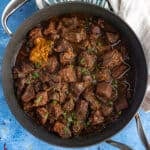



Darryl H. says
This was my 4th recipe I made of Mike's. Each time I have been pleased. He is my new best friend, bc I like spicy foods! 🙂
I had some top round to use in my freezer, so I used that. It came out great, except probably not as great as brisket. I didn't have any Scotch Bonnet peppers, but I did find the powder at a local store. I used 2 tsps and the heat was near perfect for me. I also made some grilled asparagus in my air fryer.
Mike Hultquist says
Awesome to hear! I'm glad you're finding recipes you enjoy, Darryl. Thanks!
Jérémie says
Hey Mike! thanks for this great recipe, it's a real find. This dish is truly delicious. With its sweet and spicy flavors, perfect acidity, and lots of spices: what a pure delight! Thanks again, Buddy!
Mike H. says
You are very welcome, Jérémie! =)
Mohamed Rahaman says
we usually leave our pepperpot on the stove for days and it does not spoil. The casareep acts as a preservative. however, if you use onion, it's best to put it in the fridge. most of us (Guyanese) don't use onion in our pepperpot. our Amerindians (Indigenous peoples) would always have a pot going outside and would just keep adding meat and/or fish as need as the days go by.
BTW, pepperpot is our national dish.
Mike Hultquist says
Thanks for your input, Mohamed. Cheers.
Ross says
What is cassareep?
Mike Hultquist says
Ross, this is mentioned in the post and notes section. I updated it to make it clearer. Cassareep is a bitter syrup made from cassava root.
Suzanne says
I just love spicy food that is more interesting than just a few peppers thrown in. Since I’m a vegetarian I’m going to make it with a few different beans and even throw in some tofu and or tempeh and I sometimes sprinkle a chopped boiled egg on top for extra protein and healthy fats. I have nothing against meat eaters, I was just raised vegetarian! I’d love spicy/complex vegetarian recipes in your newsletter!
Mike Hultquist says
Thanks so much, Suzanne. I agree, the spicy food life is a lot more than just tossing in peppers or dumping on hot sauce. I just love it. I appreciate your comments.
Ronald Keller says
Could this be in a Crockpot or Slowcooker?
Mike Hultquist says
Yes, Slow Cooker Instructions have been added to the Notes section of the recipe card. Enjoy, Ronald!